Frase is a solid tool for fast, affordable content creation. It’s built for solo creators and lean teams that prioritize speed and simplicity over strategic depth. If your main goal is to hit publish quickly, Frase gets the job done.
But if you’re aiming for long-term search visibility, traffic growth, and topical authority, Frase starts to show its limitations.
Here’s where it falls short:
- No internal linking support, making it harder to build strategic content hubs
- No topical mapping tools, so it’s difficult to plan for authority-building content clusters
- Content scores that don’t correlate with rankings—studies have shown minimal real-world SEO impact
- No post-publish optimization workflows, leaving underperforming content stuck
- Limited collaboration features, which can slow down team-based content production
That’s why many growing teams start with Frase but eventually outgrow it.
If you’re looking for a platform that keeps pace with your SEO goals, it’s worth exploring the top Frase alternatives.
1. Surfer
Surfer is a full-stack content optimization platform designed to help your team create, optimize, and grow content that ranks.
Like Frase, Surfer helps you generate outlines and optimize your writing. But where Frase prioritizes speed and simplicity, Surfer is designed for depth, structure, and long-term search performance through its advanced features .
Main features:
- Content editor: Optimize content in real time with keyword, structure, readability, and topical coverage guidance.
- Internal linking suggestions: Get recommended internal links based on your Google Search Console data to strengthen site structure.
- Content Audits: Identify underperforming pages and receive actionable recommendations to refresh and improve existing content.
- Topical Map: Discover new topics and create a content strategy focused on strengthening your topical authority.
- AI tracker: Monitor your brand’s visibility across AI search engines like Google SGE and ChatGPT Search
At the center of Surfer is the Content Editor, which updates your Content Score in real time as you write. And that score isn’t just decorative: Surfer’s Content Score has a 0.28 correlation with Google rankings, while Frase’s score has no proven connection to performance (Ahrefs found it at just 0.1).
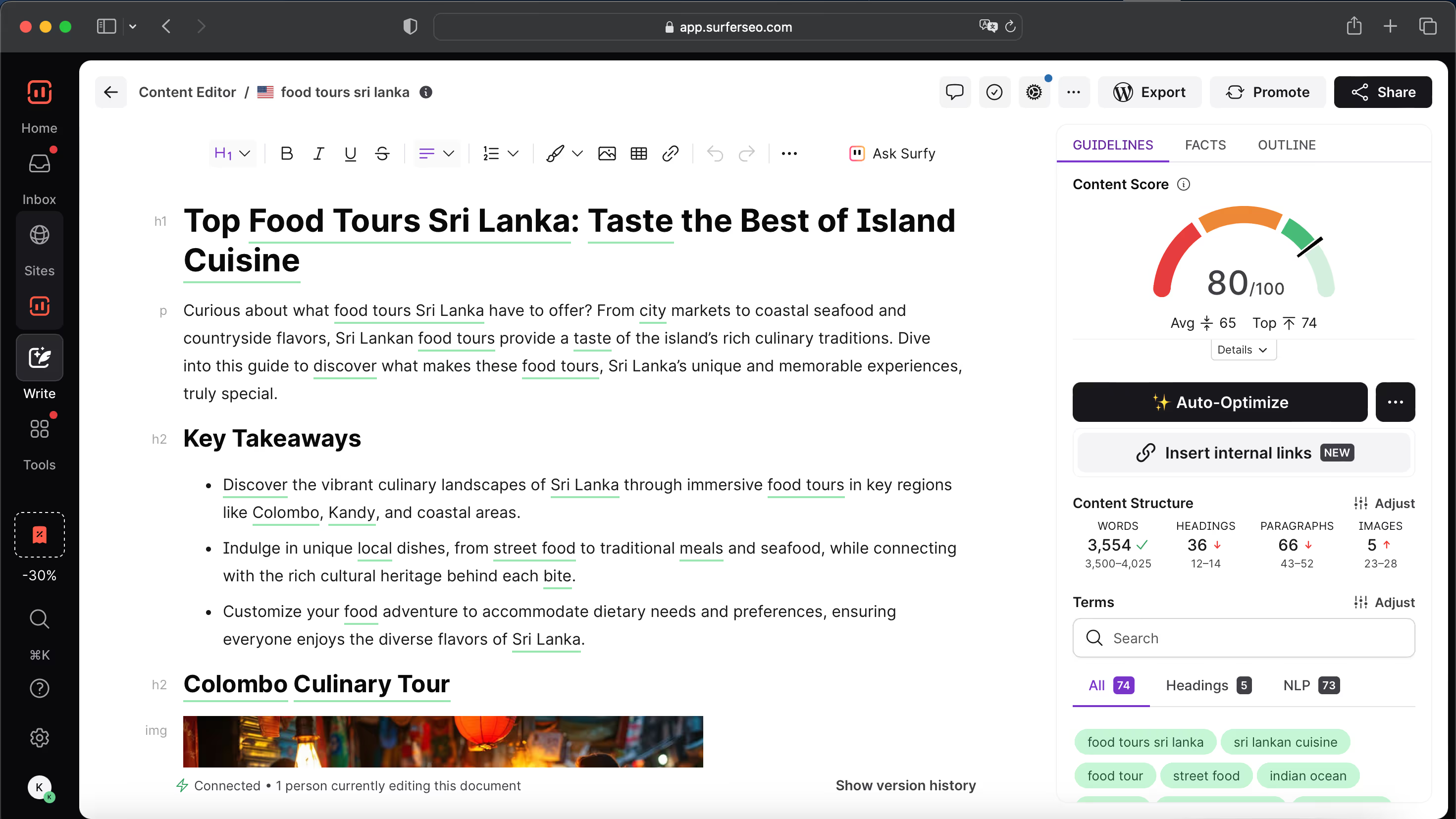
Need to boost your score? Surfer’s Auto Optimize and Coverage Booster can enhance your content with one click, filling gaps, inserting missing keywords, improving coverage, and even formatting for AI search engines like Google’s AI Overviews and ChatGPT.
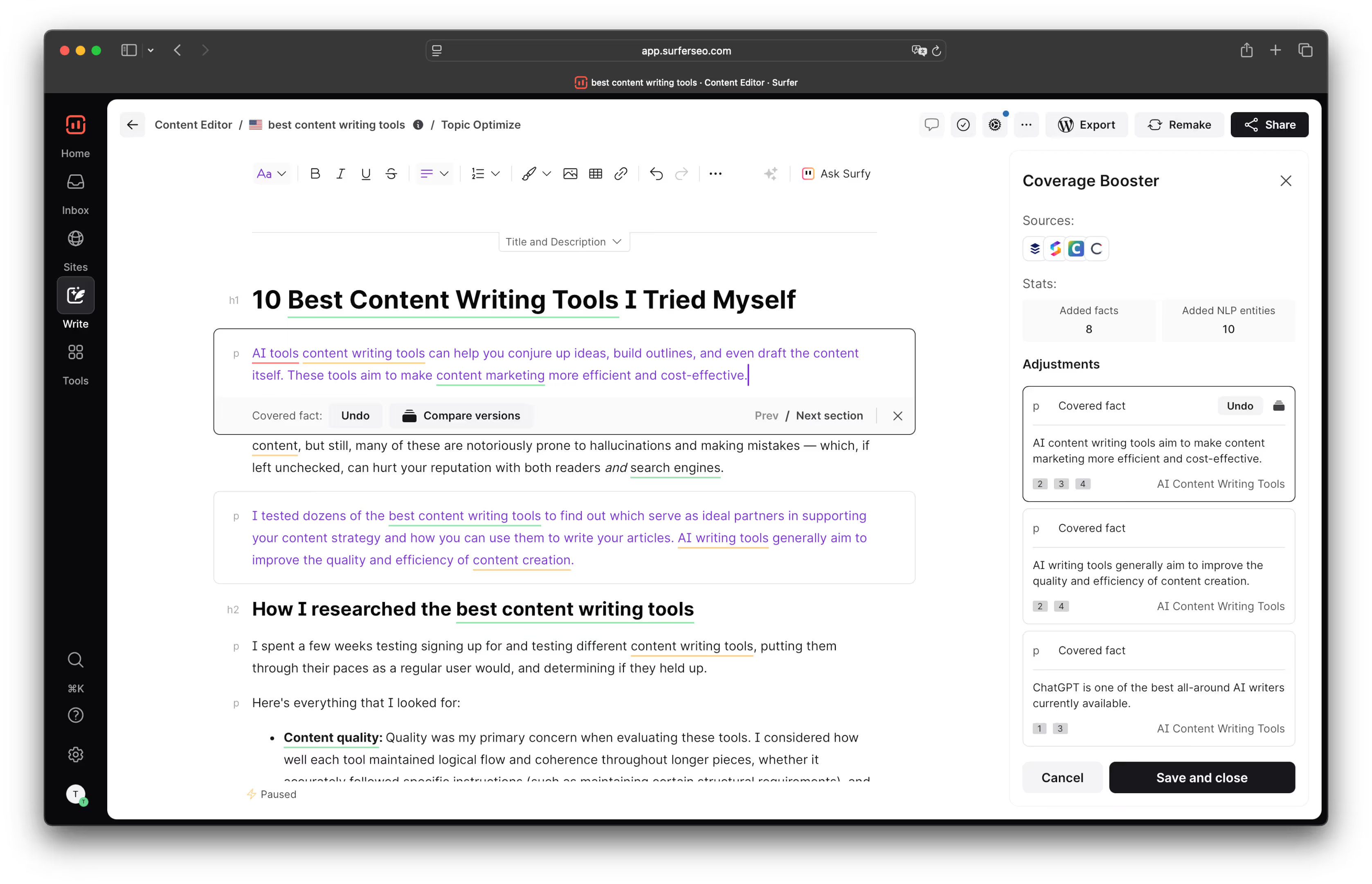
You’ll also get Surfy, a built-in AI assistant trained to match your brand voice. Surfy can rephrase content, suggest improvements, and help repurpose articles into other formats like social posts or emails, something Frase doesn’t offer.

Within the Sites tab, you can monitor and manage your entire SEO workflow in one place. Sites connects to your Google Search Console to help you audit performance, identify underperforming pages, and track changes over time, without switching between tabs or spreadsheets.
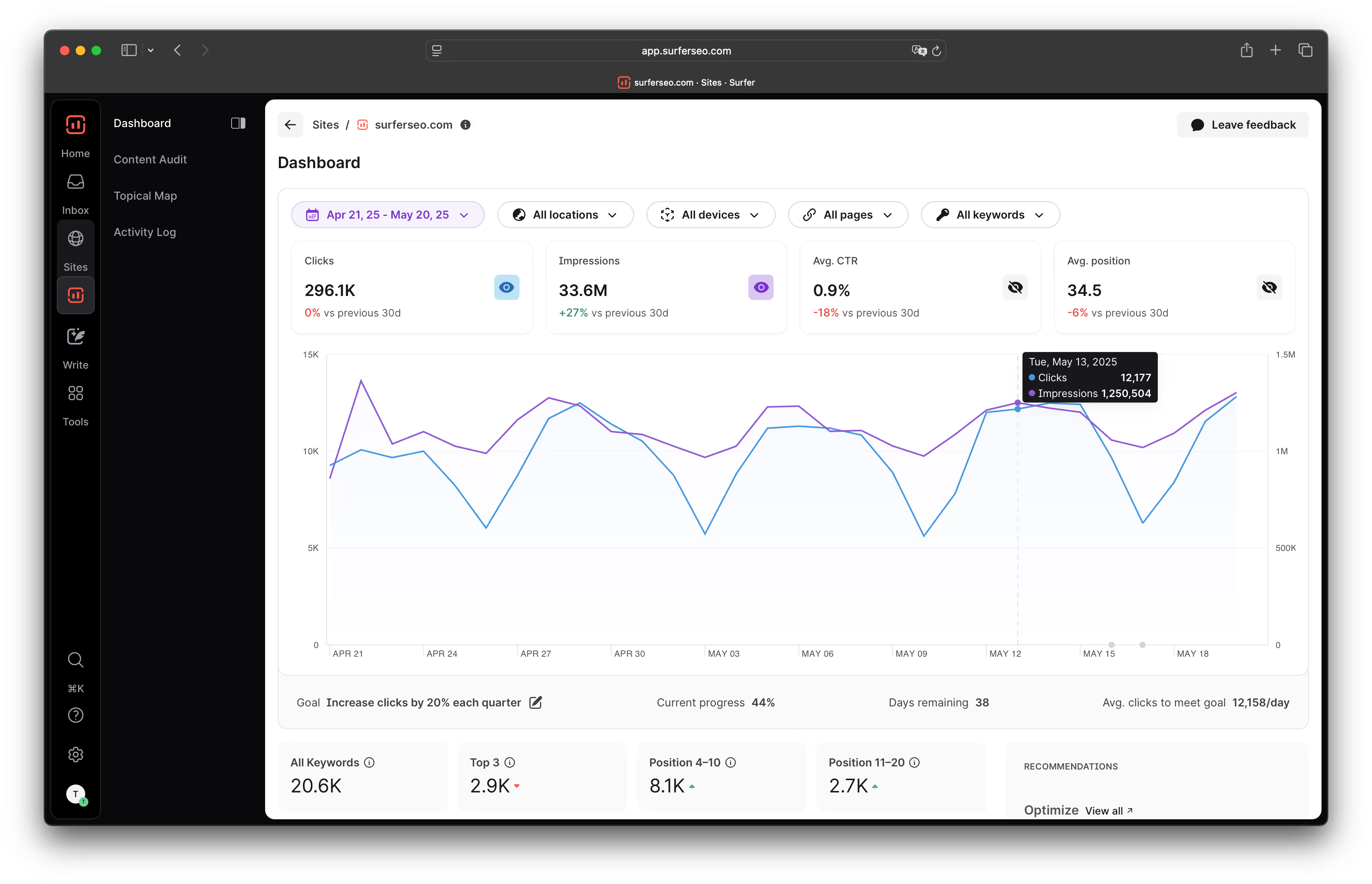
If Frase helps you move fast, Surfer helps you move smart. It’s ideal for teams that want to scale not just output, but actual results.
💡 Want to dive deeper into how Surfer stacks up against other tools? Check out our Surfer vs Frase comparison for the full breakdown.
2. Clearscope
Clearscope is a widely used content optimization platform designed to help teams create content that aligns with what’s currently performing in search.
It’s known for its clean interface, straightforward guidance, and reliable keyword suggestions, making it a solid choice for writers and editors focused on quality over quantity.
Main features:
- Content reports: Analyze up to 100 queries at once to uncover relevant keywords, structure, and topical focus based on competitor data.
- Content inventory: Monitor published pages inside a centralized dashboard with traffic and SEO metrics to identify underperforming content.
- Content editor: Optimize content using real-time keyword suggestions and readability guidance directly within Clearscope’s editor.
Clearscope’s content inventory helps surface opportunities for content improvement by pulling in performance data like clicks and estimated SEO value.
It also flags technical issues, such as 404s or indexing errors, and suggests internal links to strengthen topic clusters.
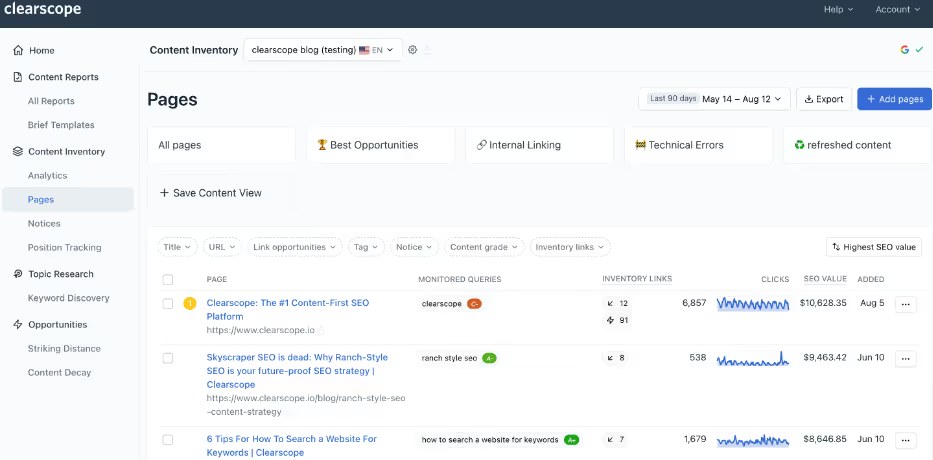
While the tool excels at surfacing relevant keywords and improving on-page elements, its AI capabilities are limited to outlines, and there’s no automation for content updates or internal linking.
Clearscope is ideal for teams looking for a lightweight, reliable optimization tool without the overhead of more complex platforms. But for those who need a full content lifecycle solution, from planning to writing to performance tracking, it may feel limited.
3. MarketMuse
MarketMuse is built for teams that take a strategic, data-heavy approach to content planning and optimization.
Rather than focusing solely on real-time writing support, it emphasizes broader topical coverage, long-term performance, and deep content inventory analysis.
Main features:
- Content inventory: Audits your existing content to identify gaps and recommend which pages to update or expand along with estimated potential value.
- Topic modeling: Surfaces related topics, subtopics, and questions you should cover to improve topical authority for each target keyword.
- AI content briefs: Automatically generates detailed outlines with suggested headings, questions, and supporting topics based on what’s ranking.
- AI writing: MarketMuse can generate full content drafts, though the output often requires significant editing for tone and clarity.
Where MarketMuse really stands out is its planning depth. Tools like Topic Navigator and SERP X-Ray provide a broader understanding of what content ranks and why, revealing everything from keyword variants and CPC data to average word count, content score, and search intent.
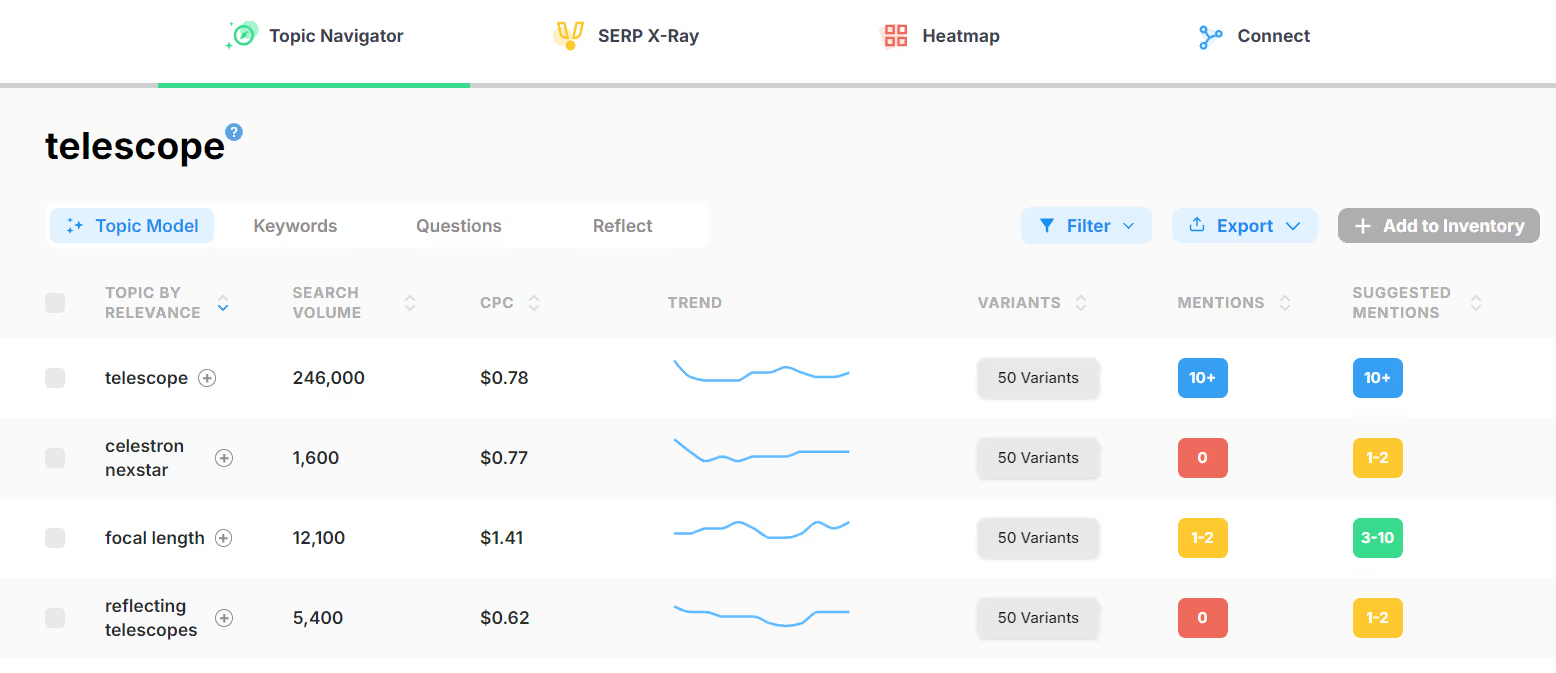
The Heatmap feature offers visual competitor analysis, showing how top-ranking pages cover related secondary topics. This makes it easier to identify missed opportunities and content gaps in your own pages.
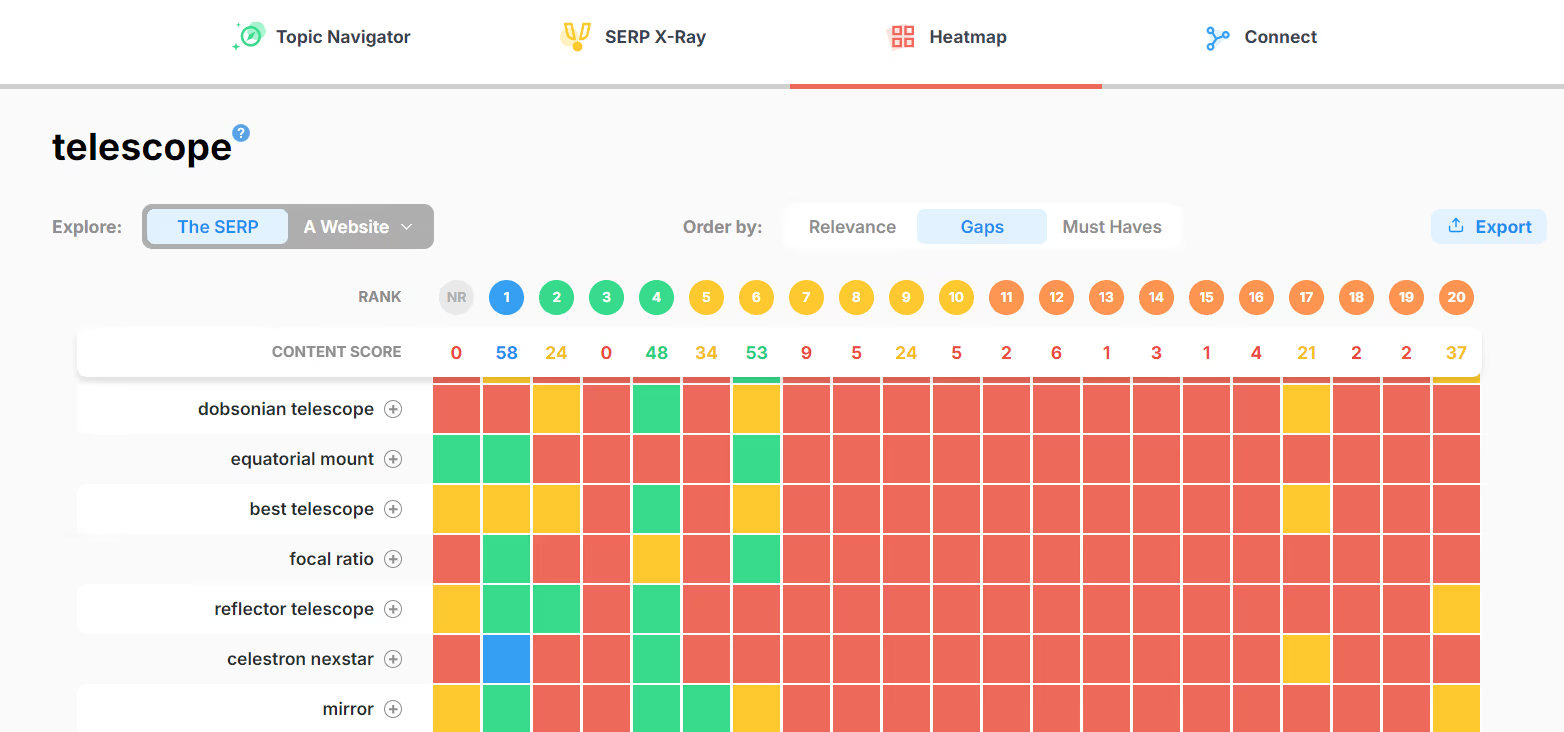
However, MarketMuse isn’t built for real-time writing guidance or fast-turnaround drafting.
It lacks features like auto-internal linking, collaborative editing, or inline optimization tips, making it better suited to strategic teams with a dedicated SEO lead rather than solo writers or lean marketing departments.
4. Dashword
Dashword is a lean content optimization tool designed for smaller teams that want to streamline content research, brief creation, and writing.
Rather than offering deep AI capabilities or robust collaboration features, Dashword focuses on making content production faster and more structured through simple, guided workflows.
Main features:
- Keyword research: Provides search volume, CPC, difficulty, and secondary keyword suggestions to help guide topic coverage.
- Outline builder: Pulls headers from top-ranking pages, allowing users to build content outlines via a point-and-click interface.
- Content editor: Offers real-time keyword tracking and a content score to help writers stay aligned with SEO best practices during drafting.
Dashword’s strength lies in its simplicity. It automatically surfaces relevant questions, headings, and keyword suggestions to inform content briefs without requiring manual SERP analysis.
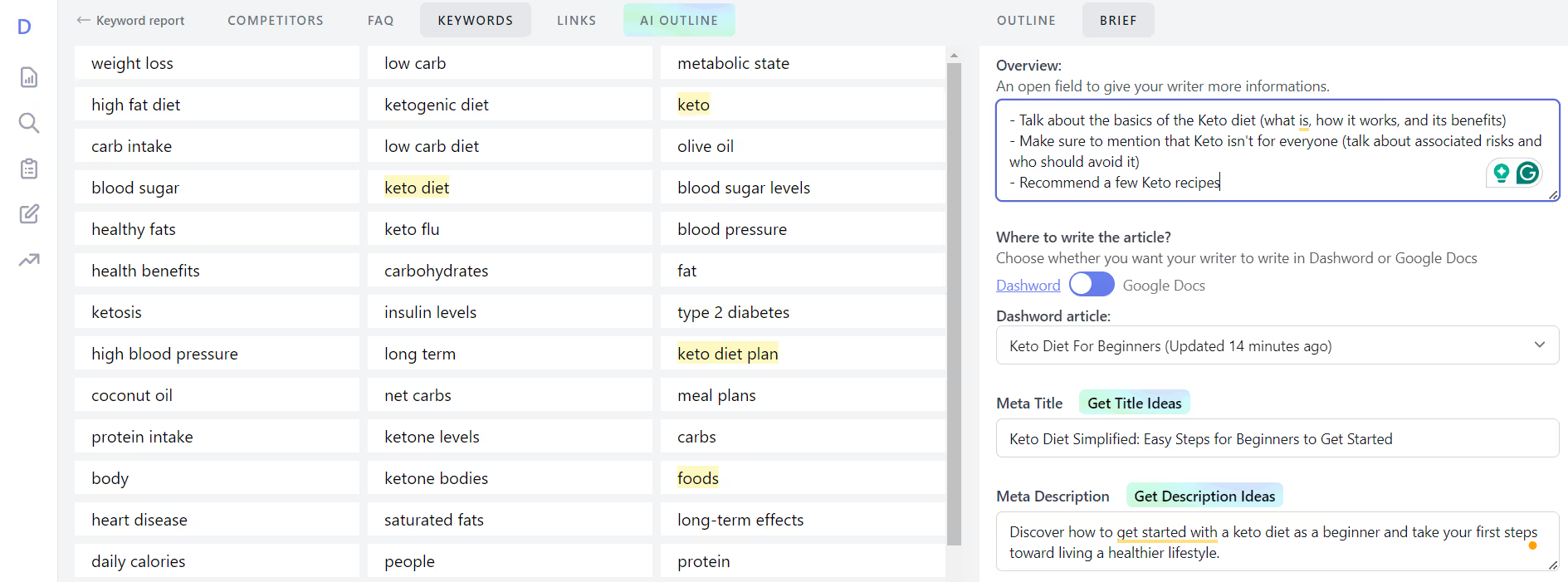
The built-in editor keeps the optimization process close to the writing, though it lacks advanced functionality like AI-generated drafts or live collaboration.

While the interface is clean and easy to navigate, it hasn’t evolved much visually. The absence of commenting or review tools makes team collaboration less seamless.
That said, for teams focused on speed and SEO clarity over complex workflows, Dashword offers an efficient and easy-to-learn solution.
5. Scalenut
Scalenut is an all-in-one AI content platform that blends keyword research, content planning, and optimization into a single workflow.
It’s designed for teams aiming to scale SEO content production while maintaining consistency and efficiency.
Main features:
- Cruise Mode: Automatically generates SEO briefs and long-form content based on a seed keyword and location, incorporating top-ranking insights, FAQs, and suggested internal links.
- Traffic Analyzer: Connects with Google Search Console to track page performance metrics like impressions, CTR, and average positions, helping identify content opportunities or declines.
- Content Optimizer: Offers real-time guidance on keyword usage, density, and formatting while writing, helping optimize for SEO best practices and featured snippets.
Its automation-first approach appeals to teams looking to speed up production without sacrificing structure.
However, the interface can feel cluttered, and there's a learning curve involved. Some users note friction in navigating between modules and adapting to its workflow logic.
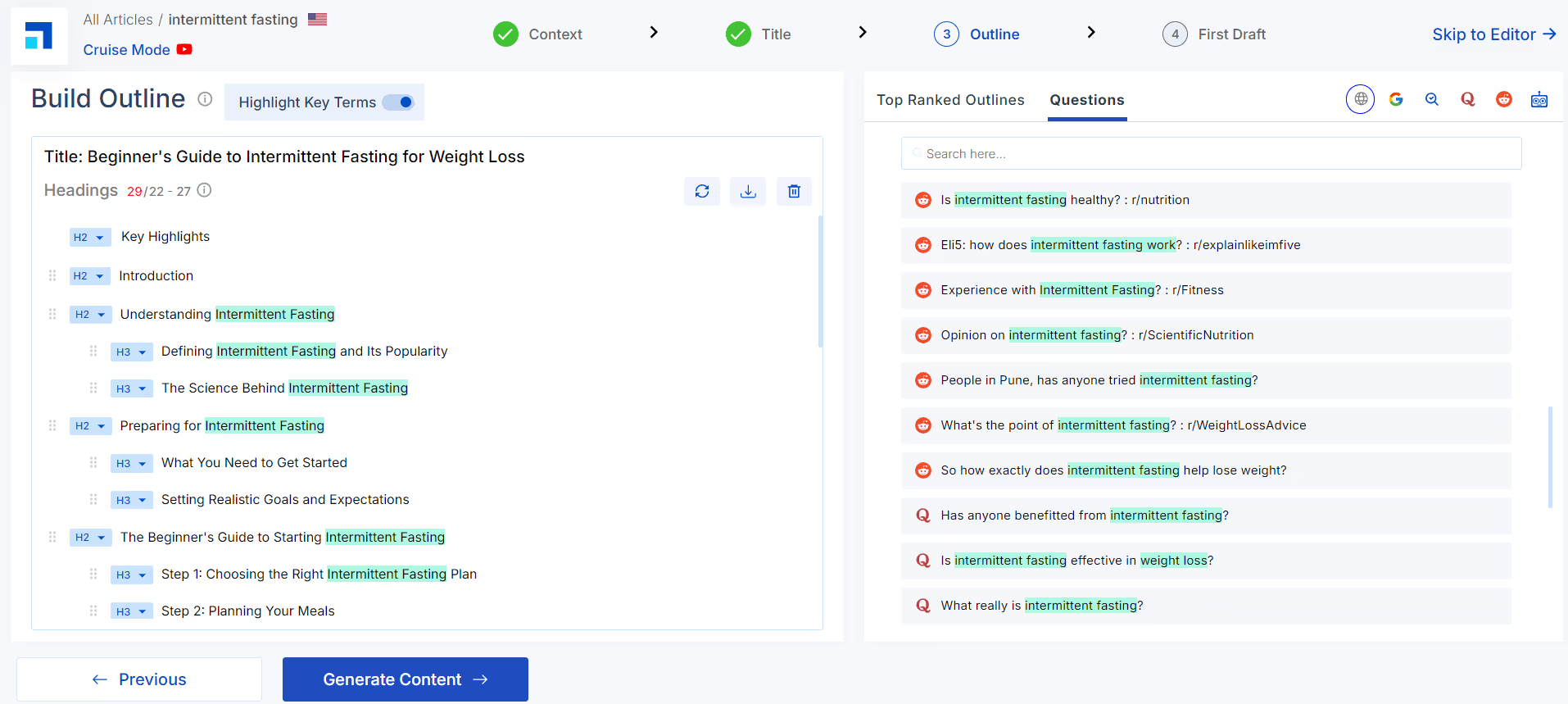
Scalenut's content editor offers the features necessary to handle SEO optimization during the content creation process. It tracks keyword density and points out any issues about headings or links.
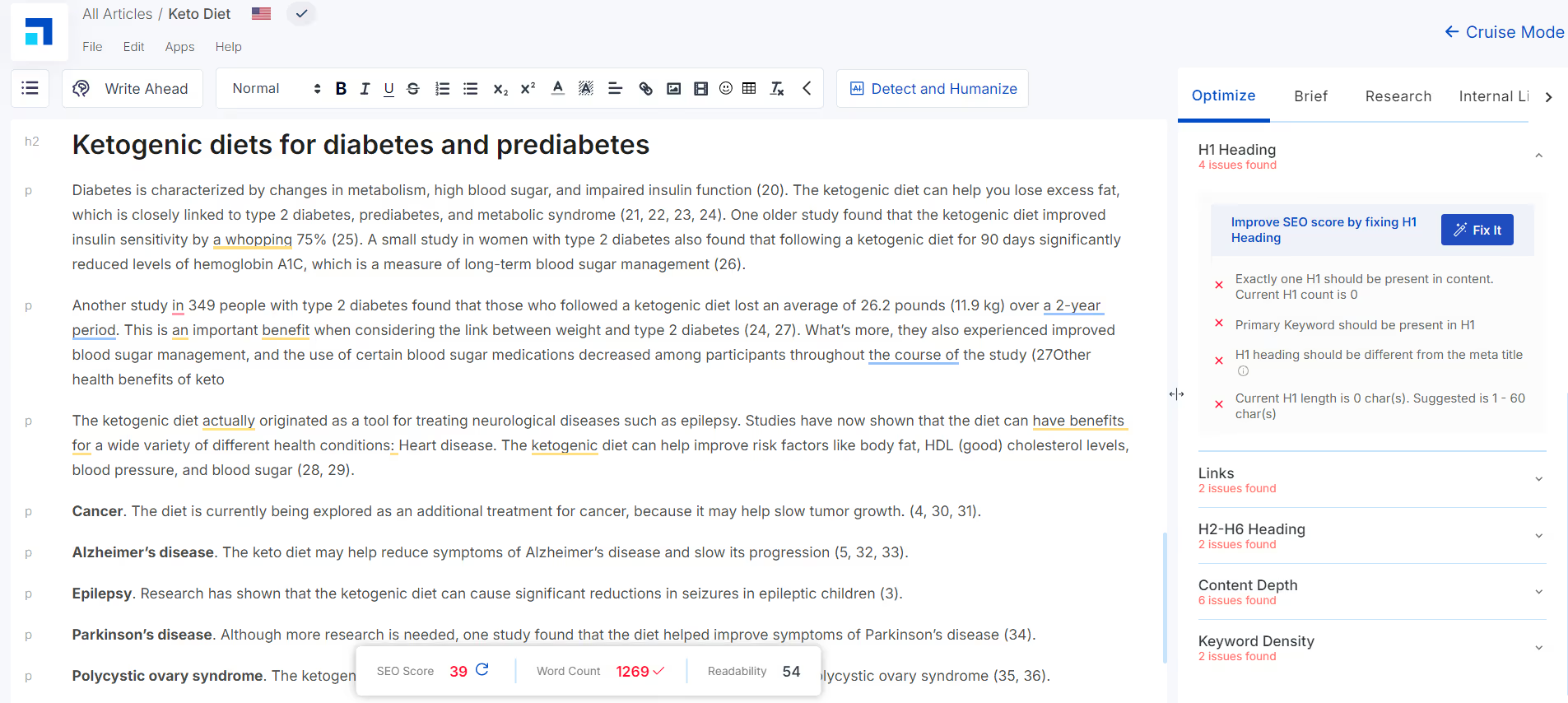
For more hands-on users, there’s a library of free tools, like minifiers and sitemap generators that support broader SEO workflows.
Scalenut’s breadth of tools makes it appealing for all-in-one use, but the experience comes with a learning curve. The tool is better suited for teams comfortable experimenting with different workflows and interfaces.
6. Jasper AI
Jasper is an AI content platform built to help marketing teams create written assets at scale. It’s best suited for teams prioritizing speed and output, particularly when the goal is to maintain brand voice and messaging consistency across multiple channels.
Like Frase, Jasper offers full AI article generation. However, it leans more into brand alignment and content repurposing than direct SEO support.
Main features:
- Built-in image editor: Generate images from prompts or enhance existing ones through automatic background removal, upscaling, and other visual editing tools.
- Knowledge hub: Store internal docs, style guides, and brand guidelines to ensure Jasper produces content aligned with your tone and messaging.
- Integrations: Works with tools like Webflow, Surfer, and Zapier for broader functionality across your stack.
Jasper’s AI is prompt-driven, meaning content is generated based on how clearly and accurately tasks are described. It can create full articles, summaries, social posts, email copy, and more, all from a single source of content.
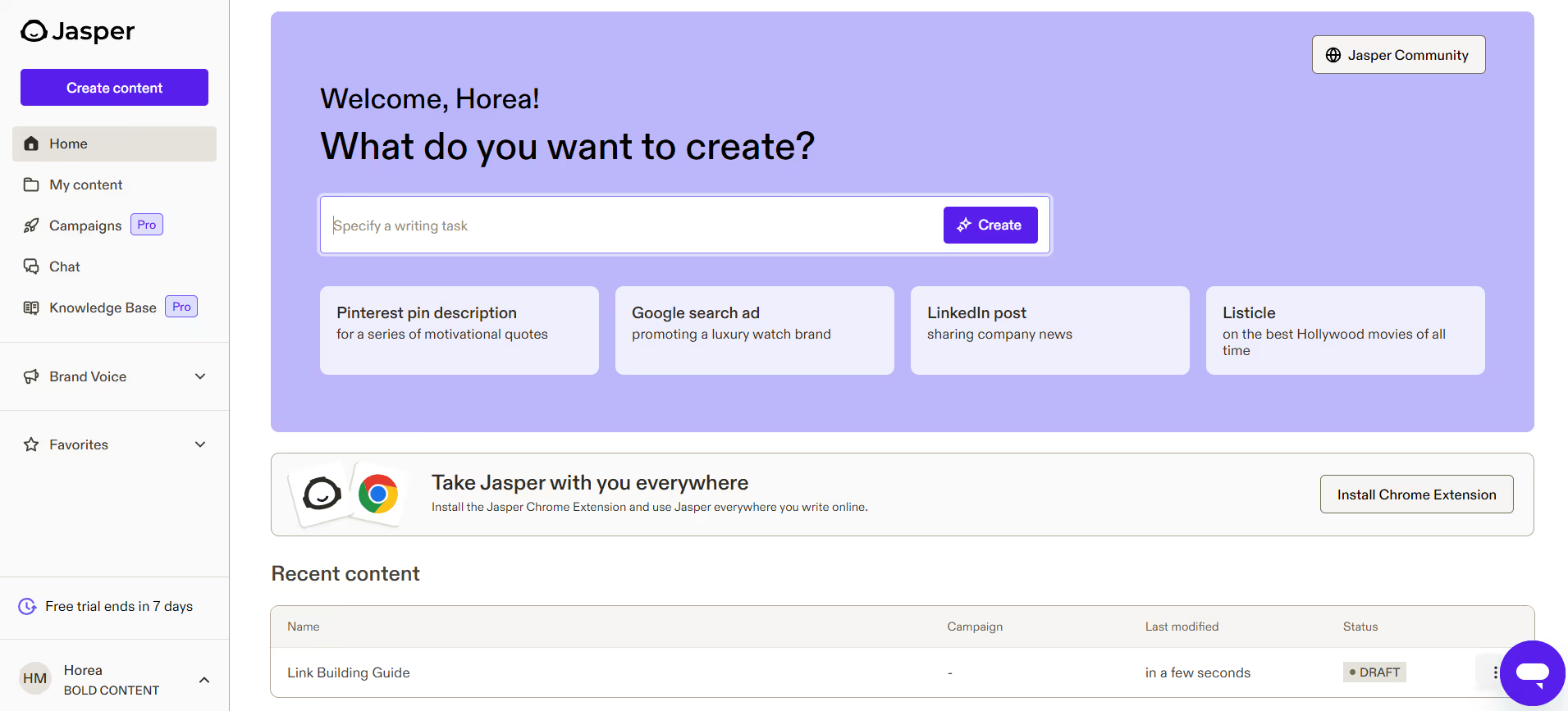
Teams can also repurpose long-form content using the platform’s Remix feature, which quickly adapts material for different formats or channels.
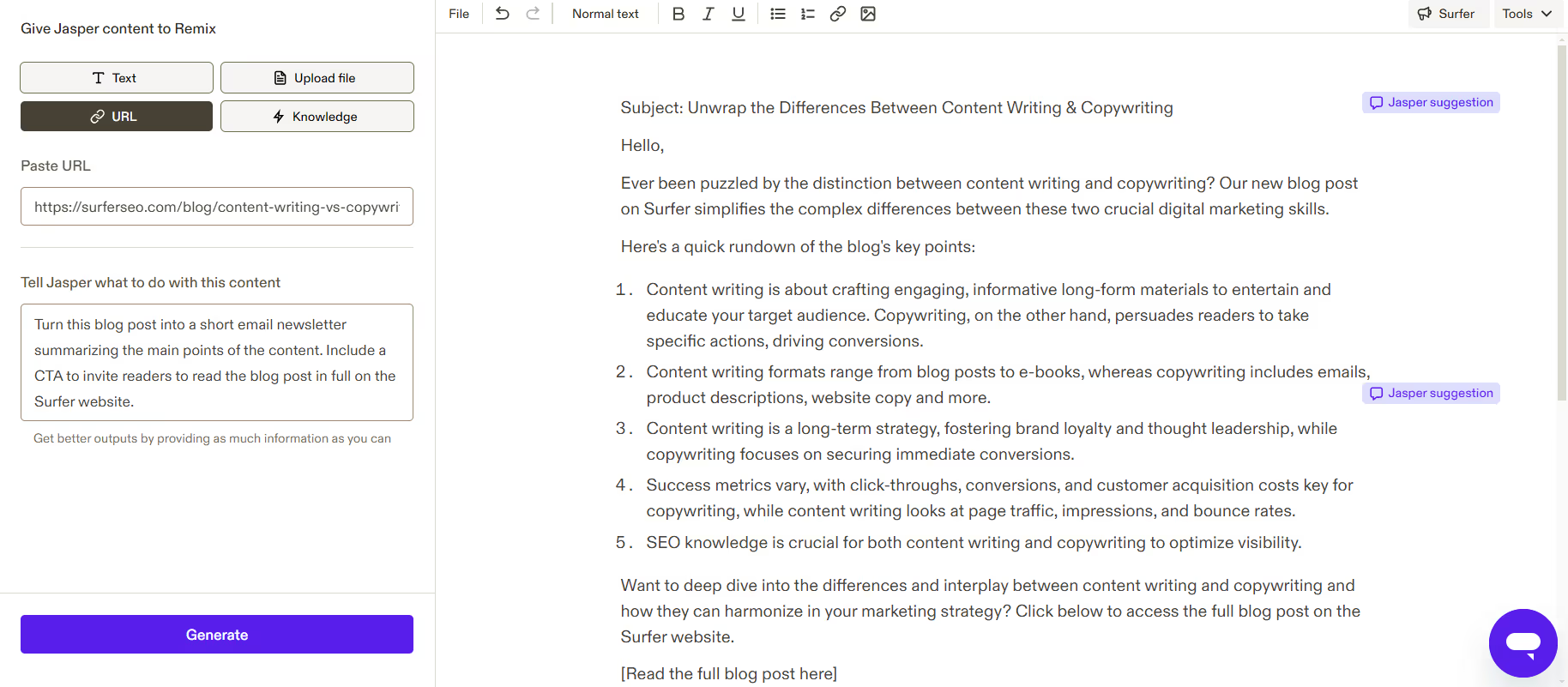
That said, Jasper does require refinement. Prompt quality significantly influences output, and users often report a learning curve when it comes to achieving consistent, high-quality results.
While it supports content production, it doesn’t offer built-in SEO tools, though that gap can be bridged through its integration with Surfer.
Jasper is best positioned as a content creation engine for teams focused on scale, speed, and brand cohesion. It’s less suited for those looking for deep SEO optimization or structured workflows for planning and performance tracking.
7. Semrush Writing Assistant
Semrush Writing Assistant is a lightweight content editing tool that helps improve SEO and readability based on target keywords.
Rather than offering end-to-end content workflows, it serves as an optimization layer for content that’s already been drafted.
Main features:
- Platform integrations: Available as an extension for Google Docs, MS Word, and WordPress, allowing teams to optimize content within their preferred environments.
- AI writing assistant: Offers rewrite suggestions and section edits to improve clarity or engagement, especially useful for revising rough drafts.
- SEO checks: Tracks keyword presence, highlights link or image alt text issues, and provides suggestions for improvement based on SEO best practices.
Semrush Writing Assistant scores your content across four key areas: SEO, readability, tone, and originality. While helpful for refining content, originality and tone scoring require a paid plan.
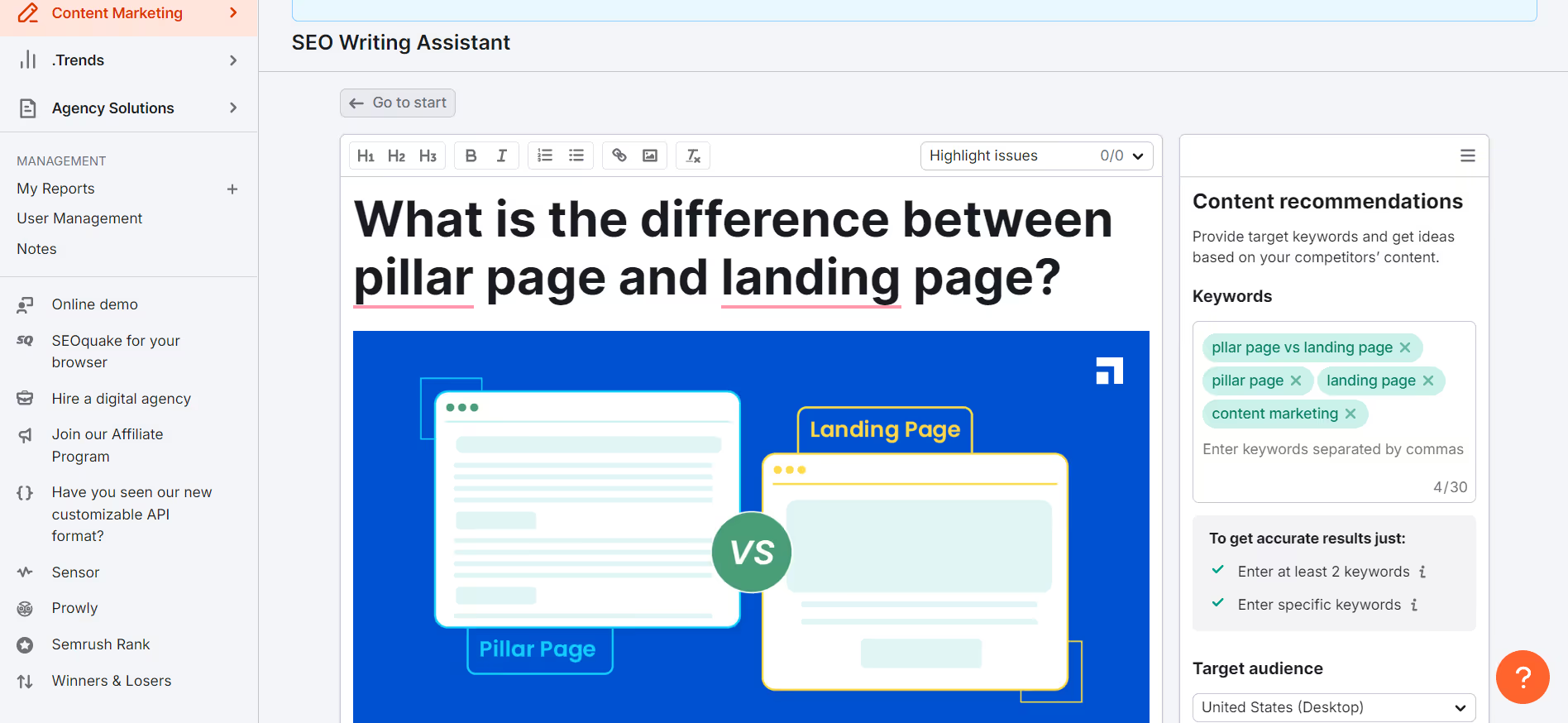
As for SEO optimization, the platform highlights how well your content aligns with target keywords and related search terms.
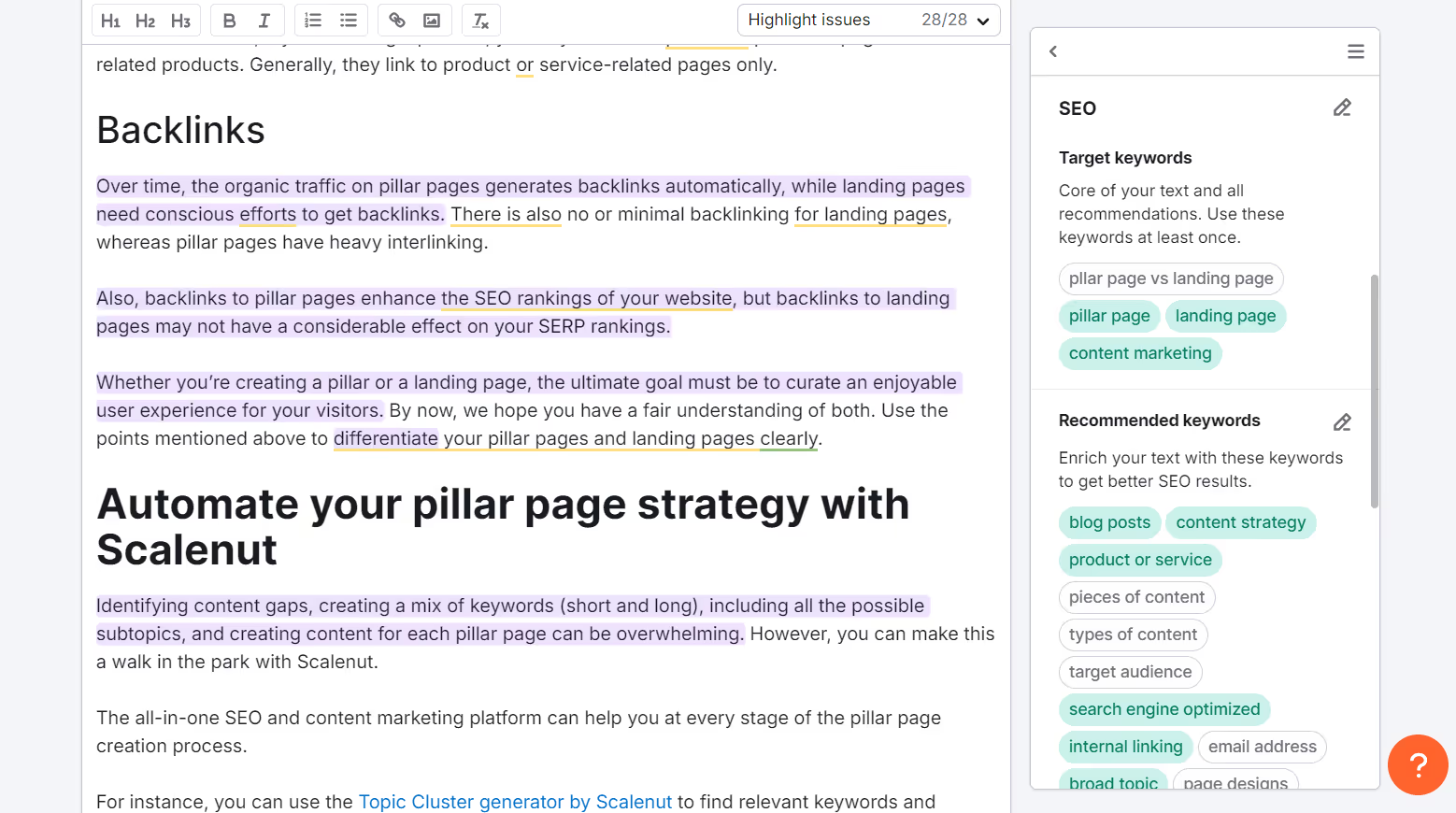
Compared to more comprehensive platforms, Semrush Writing Assistant doesn’t support content briefs, outline generation, or full-length AI drafting. It’s built primarily for quick reviews and incremental improvements.
For existing Semrush users, it adds value as part of a broader SEO toolkit. But as a standalone solution, it’s limited to surface-level guidance rather than full-scale content planning or production.
8. Rankability
Rankability is a content optimization platform that covers keyword research, content editing, and performance monitoring.
It’s especially appealing to smaller teams looking for a clean interface and straightforward workflows without a steep learning curve.
Main features:
- Keyword research: Surfaces relevant keywords with key metrics like search volume, CPC, trends, intent, and ranking difficulty. Filters make it easy to sort keywords based on goals.
- Content monitoring: Tracks how well published content aligns with target keywords using visual charts and rankability scores.
- Content editor: Optimize new or imported content directly in the platform. You can also analyze competitor content to spot topical gaps. AI-generated briefs are included but limited to outlines.
Rankability’s content editor shows how well-optimized a piece is based on keyword usage, structure, and its proprietary rankability score. You can import published content, or a competitor’s article, to see what’s missing or overused.
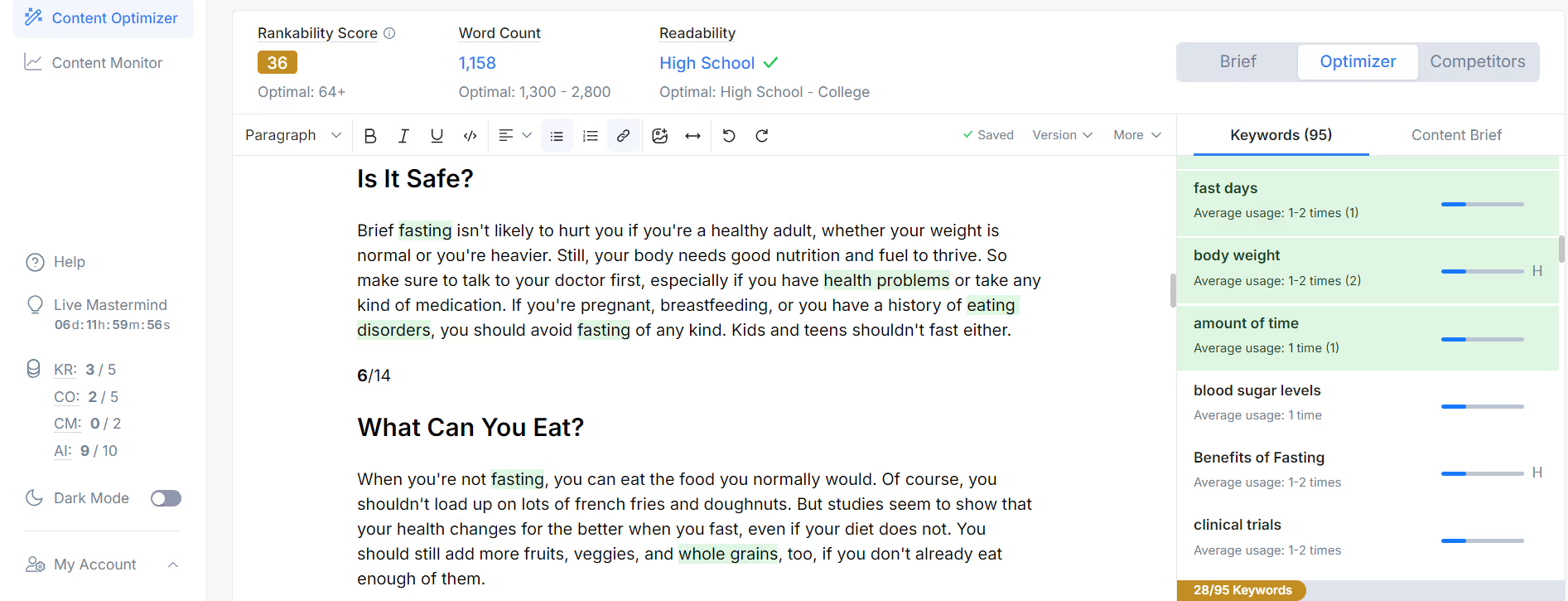
Brief generation is fast and straightforward. The AI assistant pulls common questions and structural patterns from top-ranking pages, helping outline what to cover and how to structure it. That said, the AI is limited to outline generation only, there’s no long-form writing or rewriting support.
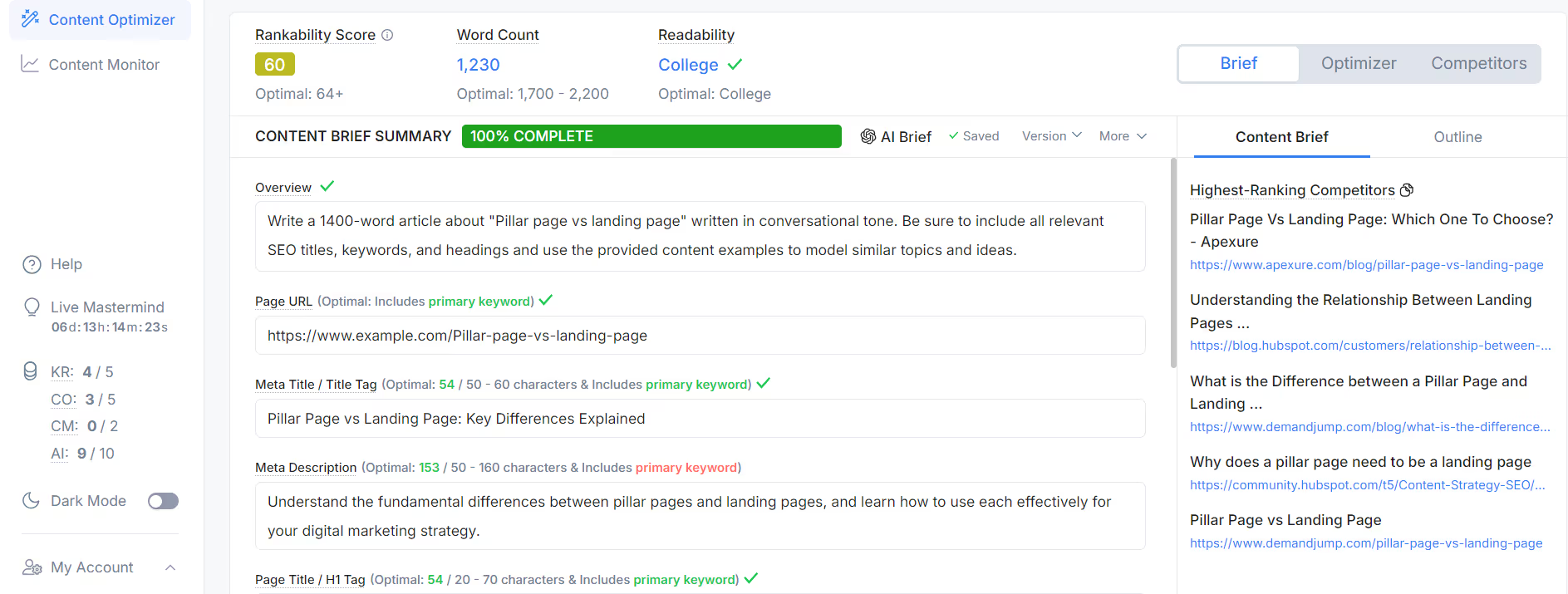
Rankability lacks some advanced capabilities. There’s no topic modeling, internal linking suggestions, or real-time writing assistance. It also uses a credit-based pricing model, which can limit how much you use key features each month.
In short, Rankability is a lightweight, accessible platform best for teams focused on on-page improvements without the complexity of enterprise SEO tools.
9. Page Optimizer Pro
Page Optimizer Pro (POP) is an all-in-one on-page SEO tool that combines content optimization, AI-assisted writing, and competitor analysis in a single interface.
It’s built for marketers who want detailed SEO recommendations without losing control over how those changes are implemented.
Main features:
- SEO recommendations: Get automated guidance on keyword usage, page structure, schema, and more. POP’s AI can also apply these changes directly.
- Competitor analysis: Analyze how top-ranking competitors structure their content, including schema markups and keyword strategies.
- POP Watchdog: Monitor live pages for ranking changes triggered by algorithm shifts or competitor updates.
POP stands out for its depth of optimization insights. Its reports go beyond keyword suggestions and include evaluations of LSI usage, EEAT alignment, word count ranges, and content structure.
The tool helps you understand not just what to optimize, but why it matters for rankings.
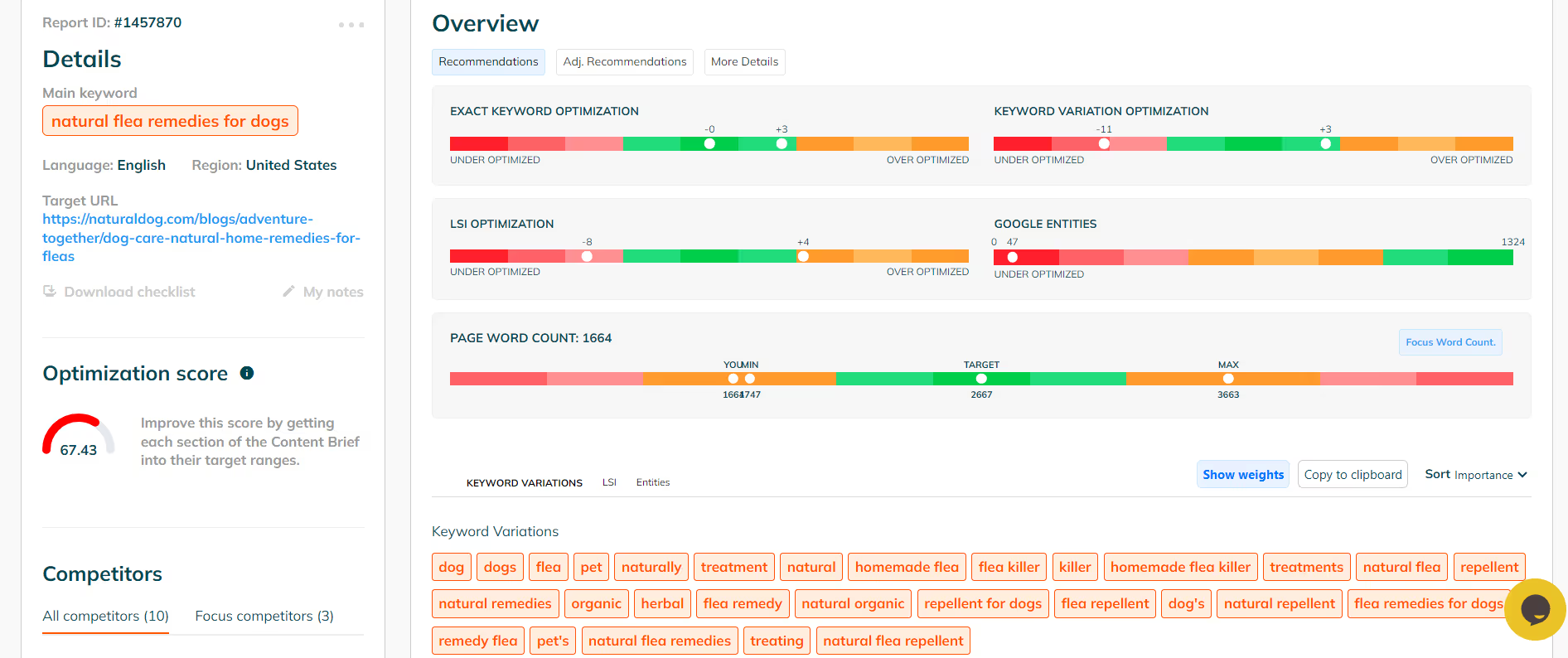
Its competitor analysis is equally thorough. POP pulls in the structure and schema data from competing pages and offers custom schema recommendations to help you close gaps. You can use its AI assistant to generate and implement schema based on these insights.
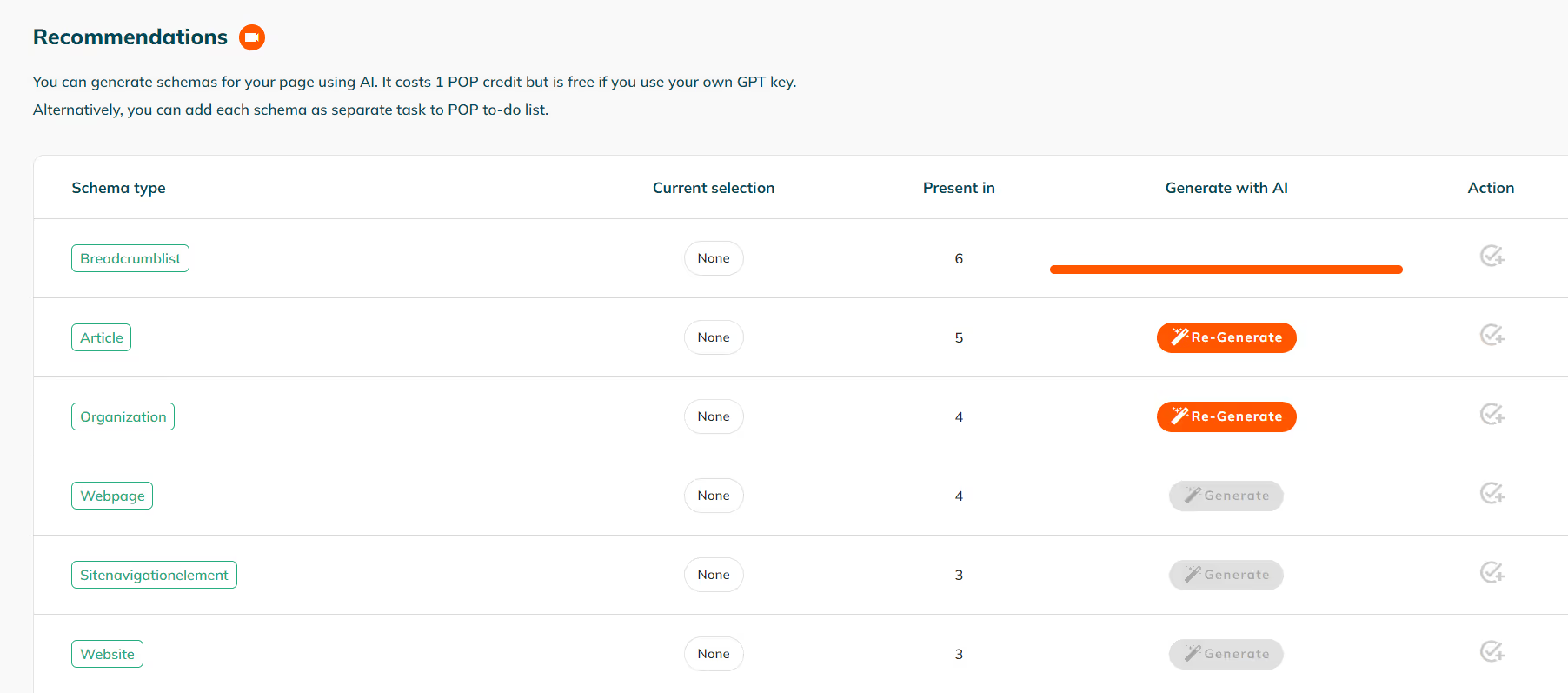
That said, POP is more focused on technical and structural optimization than real-time collaboration or content ideation. It doesn’t include tools for topic discovery, team workflows, or in-editor keyword suggestions.
10. Content Harmony
Content Harmony is a content marketing and SEO platform built to support research-heavy teams that prioritize strategic planning and structured workflows.
It combines keyword intelligence, outline creation, and content brief generation in a streamlined, step-by-step system.
Main features:
- Content Workflows: Perform keyword research, find relevant content ideas, set up briefs, and develop your first draft. All via an intuitive step-by-step process.
- Promotion Workflows: Promote your content and leverage the platform's AI to generate social captions, email newsletters, and more.
- Keyword reports: Identify your target keyword's primary search intent, CPC, ranking difficulty, and search volumes via quick reports.
Its clean, focused interface is built around repeatable workflows, which is great for teams aiming to scale production with consistency.
Each workflow includes a high-level overview of your keywords' search volume, intent, and ranking difficulty. Clicking on a specific keyword will reveal more details about your target search term.
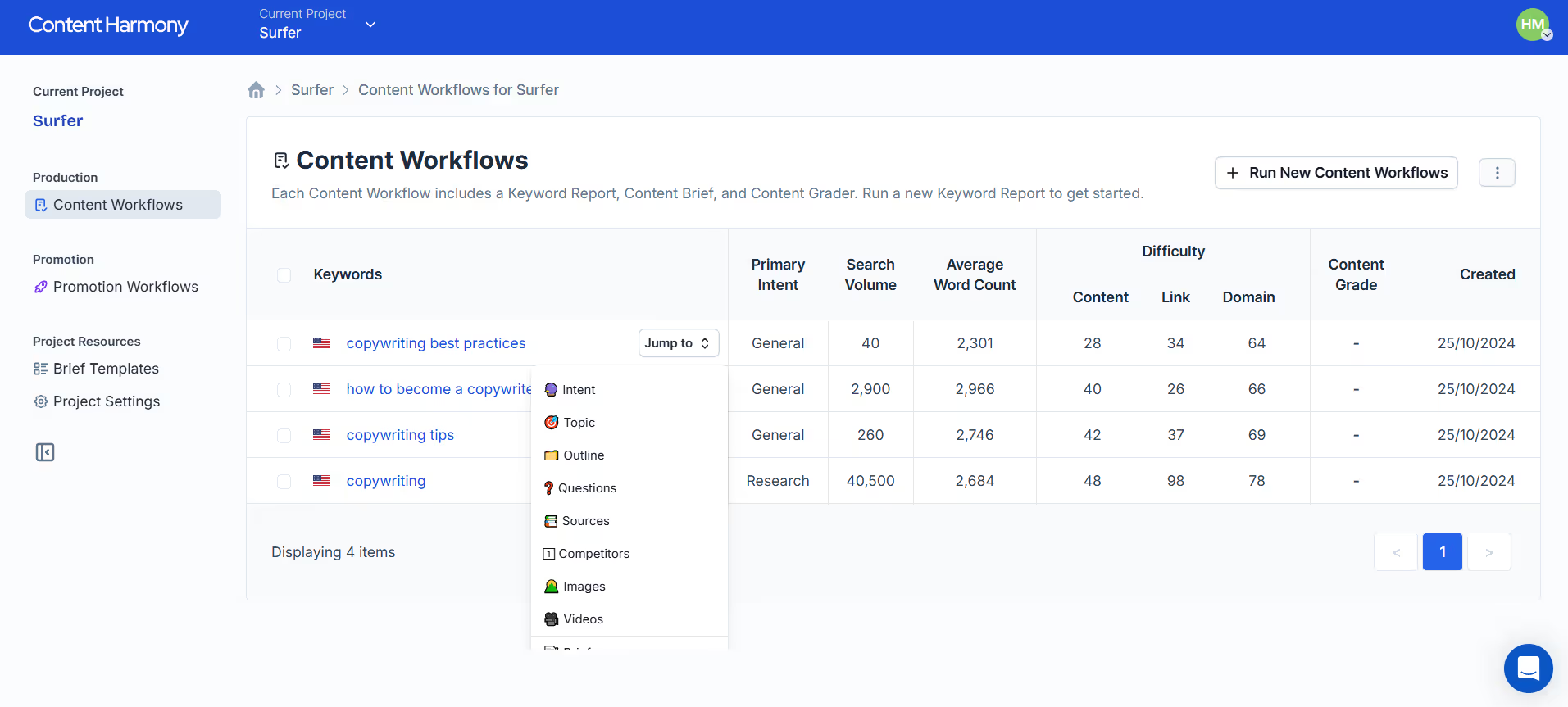
Where Content Harmony shines is in its research depth. Its keyword reports pull in questions from Google’s People Also Ask, Reddit, Quora, Stack Exchange, and even AI-generated suggestions, ideal for discovering subtopics or FAQ sections.
The platform also recommends internal and external sources, giving you reference points to support your content with credible links and ideas.
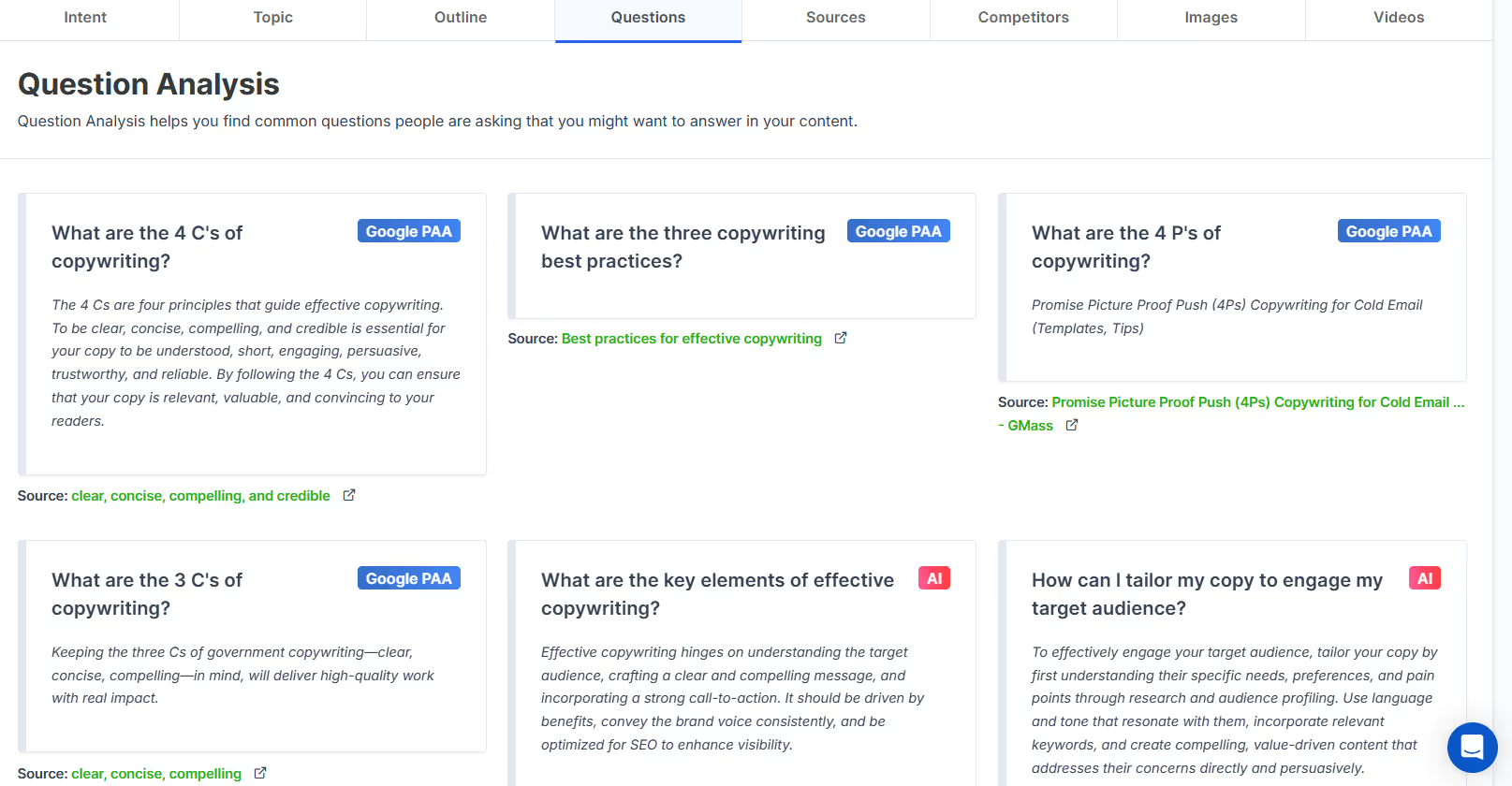
Content Harmony doesn’t offer real-time optimization during the writing phase or advanced tools for content performance tracking.
Instead, it’s best suited for teams who value strong pre-writing research and a clear editorial process over live SEO editing or collaboration features.
Choosing the right Frase alternative
If you're evaluating Frase alternatives, start by mapping your current needs to your future goals. For example:
- If you’re scaling content production, choose a platform that supports not just creation but also optimization and auditing.
- If you want to build topical authority, look for tools that offer content gap analysis, internal linking support, and strategic content planning—not just writing assistance.
- If long-term rankings matter more than fast drafts, prioritize platforms with proven ranking correlation, AI search compatibility, and workflows that extend beyond publish day.
This isn’t just about swapping out one content tool for another; it’s about investing in a system that helps you create better content and get measurable results from it.
That’s why Surfer is built not just for writers, but for SEO and content teams who want to grow traffic, improve search visibility, and lead in their niche. It helps you move beyond content production toward real content performance.
👉 Start optimizing smarter with Surfer.
.avif)
